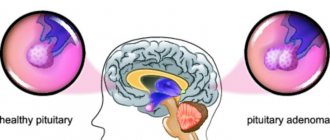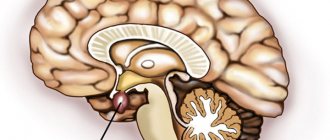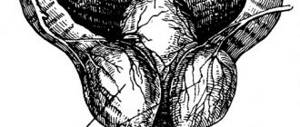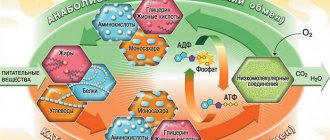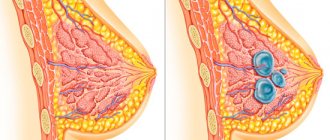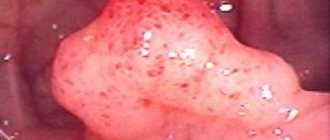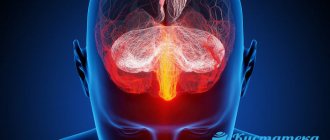Incidentaloma of the adrenal glands (ICD 10 code: E2) - any formations in this area detected by chance. They can be benign or malignant. Pathology is usually detected as a result of studies of diseases of the liver, pancreas, intestines, and stomach. The average age of patients is about 40 years, the lion's share of patients are female.
A disease detected in time is the key to a long and happy life. The lack of proper treatment leads to sharply negative consequences, including death. Take care of your health; if you feel worse, consult a doctor.
Probable causes of appearance
Incidentaloma of the adrenal gland is a pathology that determines the location of the formation and the accident of its detection. To determine the type of tumor and other information, additional diagnostics are necessary. About 85% of cases are characterized by the presence of benign tumors in patients, the remaining 15% are malignant tumors.
The adrenal glands are located above the upper poles of the kidneys, their main tasks are:
- blood pressure regulation,
- electrolytic exchange,
- are responsible for the production of female and male sex hormones.
Any malfunction of the adrenal glands entails many negative consequences.
Doctors have not yet fully established the cause of the disease. There are only theories and assumptions; there are several negative factors that influence the formation of various formations in the area of the adrenal glands.
Learn about the symptoms and treatment of kidney inflammation with medications.
Read about bladder training for cystostomy in men at this address.
Predisposing factors:
- genetic predisposition. More than 60% of victims have close relatives with similar ailments;
- excess weight, chronic illnesses (diabetes, hypertension and others);
- abuse of alcoholic beverages and other substances that lead to deterioration of health.
Symptoms and treatment of adrenal adenoma
An adrenal adenoma is a tumor that forms on the adrenal cortex. Typically, such a neoplasm is benign in nature, but in some cases it can develop into a malignant form. ICD 10 code - D35.0 benign formation of the adrenal gland.
An adenoma formed in the adrenal glands has a significant impact on the functioning of other organs and the condition of the entire organism as a whole. Since the adrenal glands are a paired organ, both adenoma of the left adrenal gland and adenoma of the right are equally common. Bilateral adenoma is extremely rare.
The disease is more common among women over 40 years of age; men are less likely to suffer from this pathology. The tumor has the shape of a capsule with homogeneous content. It can be seen quite clearly during hardware diagnostics.
Adrenal adenoma can be either a hormonally dependent tumor or a hormonally inactive one. In the first case, depending on the hormone produced, it is divided into 3 types: corticosterome (cortisol), aldosterome (aldosterone) and androsterome (androgens).
Causes and forms of manifestation
Research data indicate that the causes of adrenal adenoma development are associated with hormonal imbalance or the use of hormonal oral contraceptives. This is what determines the spread of the disease among women, since they more often suffer from hormonal imbalances than the stronger sex.
The symptoms of the disease vary and directly depend on the size of the tumor and its type. In most cases, the adenoma is small in size - up to 5 cm, so it cannot be felt by the patient. In order to feel some discomfort in the abdominal cavity due to a tumor that has arisen, it must be larger in size - up to 10 cm, which practically never occurs.
As for the forms of manifestation of the tumor according to its type, a hormonally inactive adenoma is practically not accompanied by any symptoms.
Moreover, it is often detected randomly - during an examination of the abdominal organs associated with the patient’s complaints for another reason.
The situation is completely different with hormonally dependent adenomas; their extensive symptoms are associated with them.
A cortisol-producing adenoma has the following symptoms:
- obesity, mainly in the upper body;
- muscle atrophy in the shoulder region and lower extremities;
- thinning of the skin and the appearance of bright stretch marks;
- weakening of bone tissue - osteoporosis;
- depressive states;
- development of diabetes mellitus;
- excessive body hair;
- menstrual irregularities.
The main symptom of aldosteroma, an adenoma that produces excess amounts of the hormone aldosterone, is increased blood pressure. This happens because the hormone aldosterone causes fluid retention in the body. In addition, there is increased muscle weakness and cramps. These symptoms are associated with excess potassium excretion from the body.
Androsteroma also has specific symptoms associated with excessive production of the male hormone. Such an adrenal adenoma in women causes virilization syndrome, i.e., it begins to acquire external male characteristics.
In particular, the voice becomes rougher, male-type hair appears on the body, and the menstrual cycle is disrupted. In addition, there is a decrease in the size of the mammary glands and an increase in the clitoris.
Adrenal adenoma in men has less pronounced symptoms.
Classification
After detecting an incidentaloma, the first step is to determine its type, which is very important when choosing treatment. Depending on the form and composition of the formation, several groups are distinguished.
Hormone-inactive tumors are common and do not affect hormone production in any way:
- adenoma (benign formation), is a capsule of different sizes, the contents have a granular consistency;
- lipoma The formation consists entirely of fat cells and is a benign formation;
- fibroma. Consists of fibrous tissue, refers to benign tumors;
- sarcoma. A dangerous type of malignant tumor that progresses rapidly. Sarcoma has the ability to spread to peripheral organs, and there are frequent cases of relapse;
- adrenocortical cancer. From the name it is clear that the tumor is malignant in nature, affects deep tissues, and is always large in size. In most cases, the left adrenal gland is affected.
On a note! Malignant tumors can be primary or metastases from cancer of other organs in the human body (kidneys, lungs, even brain). Malignant tumors are rarely discovered by chance. The pathological process usually makes its presence known with sharply unpleasant symptoms, which entails timely diagnosis and treatment.
Hormone-producing tumors are divided into several types:
- aldosteroma - provokes a sharp increase in the level of a hormone called aldosterone;
- androsterome and corticoestroma. Pathological formation affects the increase in the level of male and female sex hormones;
- pheochromocytoma. Education negatively affects the patient, causing an increase in the production of stress hormones (norepinephrine, adrenaline);
- corticosteroma. Cortisol production increases.
The danger of such incidentalomas is that they negatively affect a person, causing a lot of symptoms. Patients often ignore the signs, especially if, due to suppression of the hypothalamus and pituitary gland, hormone levels remain normal, the symptoms of the pathology are practically unnoticeable.
The third group of incidentalomas includes formations that, due to their structure, are not classified as tumors:
- hematomas;
- cysts;
- nodular hyperplasia of the adrenal cortex.
All pathological formations can be unilateral (common) or bilateral (rarely diagnosed).
Adrenal adenoma in women: symptoms, diagnosis and treatment
Adenoma of the left or right adrenal gland in women is a serious pathology: the symptoms and treatment of the disease depend on its type and stage.
Timely diagnostic and treatment measures can stop the development of the disease and prevent the occurrence of complications.
What kind of pathology is this and which doctor should I contact?
Adrenal adenoma is a benign neoplasm located on the adrenal cortex, filled with homogeneous contents.
It can affect one adrenal gland or both at once.
The danger of the disease is that if left untreated, a benign tumor can develop into a malignant one . The disease develops more often in women than in men. In rare cases, it occurs in children.
An endocrinologist is involved in diagnosing and treating this disease . ICD code: D35.0.
Classification
There are several types of the disease. Taking into account the general morphological characteristics of adenoma, the following types are distinguished:
- Adrenocortical. It resembles the shape of a nodule that is placed in a capsule. There is a light liquid inside. As the disease progresses, it becomes more numerous.
- Oncocytic. It is formed from large cells and has a granular structure. The formation is quite large in size.
- Pigmented. So named because it contains a dark purple-colored liquid. Its quantity increases with the development of the disease.
There are different types of pathology based on the size of the formation :
- Picoadenoma. In this case, the dimensions of each side do not exceed three mm.
- Microadenoma. The tumor size does not exceed 10 mm.
- Macroadenoma. Sometimes more than 10 mm.
- Giant adenomas. They are very rare, lead to a severe course of the disease, from 40 mm in diameter. It is quite difficult to cure a patient with such an adenoma.
According to experts, tumors larger than 30 mm are malignant in 95% of cases.
That is why education should not be allowed to grow. The sooner it is eliminated, the better.
Adenomas are also distinguished by color :
- Clear cell. The neoplasm is light in color and contains a white, slightly yellowish liquid inside. Sometimes it is almost transparent.
- Dark cell. They have a dark tint. Inside there is a dark-colored liquid, often dark yellow and dark brown.
Symptoms of the disease
Vary depending on the gender of the person .
Among women
In females, the disease manifests itself as follows:
- increase in body weight.
- the muscles and bones of the limbs become weak.
- menstrual irregularities.
- infertility.
- weakness.
- dizziness.
- improper metabolism.
- the face becomes round, the cheeks increase in size.
- the voice becomes low.
- body hair grows rapidly.
in men
Symptoms of the disease in men include:
- disruption of the digestive system.
- increase in body weight.
- thinning of the skin.
- bones and muscles become weak, making it difficult for them to withstand daily physical activity.
- decreased erection.
- impotence.
- reduced performance.
Read our article about the symptoms of chronic prostatitis in men.
causes of disease in women and men
The disease appears for various reasons. In women, adenoma develops according to the following factors and ailments:
- Hereditary predisposition.
- Hormonal disbalance.
- Taking oral contraceptives.
- Poor nutrition.
- Stress.
- Bad habits.
Men face pathology for the following reasons:
- Smoking.
- Drinking alcoholic beverages.
- Poor nutrition.
- Genetic predisposition.
- Hormonal imbalance.
How to treat?
Specialists prescribe medications to patients that normalize hormonal levels . If it stabilizes, the swelling will go away. Such drugs include:
- Cyclodinone.
- Regulon.
- Mercilon.
- Logest.
To restore hormonal levels, injections may also be prescribed on an individual basis after studying the patient’s tests. The missing hormones are administered through injections in the hospital in strictly designated quantities. It is impossible to predict the hormone administered; it all depends on the stage of the disease.
The missing hormone may vary from person to person.
Other medications are powerless in treating adenoma. In the early stages, experts prescribe the use of folk remedies . Some infusions also help normalize hormonal levels.
An infusion of snowdrop flowers is effective . To do this, mix a glass of boiling water and two tablespoons of the plant. It is necessary to insist for four hours, then filter the solution. Drink it half a glass 2 times a day.
It is recommended to use lungwort infusion . To do this, mix 200 ml of boiling water and a teaspoon of the plant. The mixture is infused for one hour, then it is filtered and consumed 1/3 cup in the morning and evening.
If the disease does not go away even after this, specialists prescribe surgery . The operation involves removal of the adenoma. It is performed under anesthesia for 1-1.5 hours. The person recovers for two weeks, but still sees a doctor for another month and follows his advice.
Consequences of the operation that the patient may encounter during the rehabilitation period are:
- Weakness.
- Pain in the abdomen, back, limbs.
- Lack of appetite.
- Pallor.
Learn more about adrenal adenoma, treatment and diet from the video:
Source: https://opochke.com/nefrologiya/nadpochechniki/adenoma-u-zhenshhin-simptomy-i-lechenie.html
Signs and symptoms
Incidentalomas are characterized by the absence of any signs; some types of pathology can clearly make themselves felt.
You can suspect the course of the disease based on specific symptoms:
- unreasonable jumps in blood pressure or a high mark on the device in constant mode;
- false urge to urinate, change in the amount of urine produced;
- fatigue, apathy, constant headaches;
- sweating;
- disturbances in sexual development (slowing or accelerating the process);
- attacks of nausea, sometimes vomiting.
If a patient has a tumor that produces a sex hormone, it is very difficult to notice signs of pathology:
- the stronger sex experiences a decrease in libido and uncharacteristic breast growth;
- women suffer from excess hair on the face, chest, and throughout the body, and there are disruptions in the menstrual cycle. Some patients note a roughened voice, baldness, and decreased breast volume.
If you notice any unpleasant symptoms, immediately visit an endocrinologist or neurosurgeon. These specialists will help identify the root cause of the disease and prescribe an appropriate course of therapy.
Symptoms[edit | edit code ]
Symptoms of adenoma of the left adrenal gland and right adrenal gland appear due to the increased amount of hormones produced. When an adrenal adenoma manifests itself, it causes the following symptoms:
- Hormonal imbalance. A woman notices increased hair growth and an increase in muscle mass, a man notices an enlargement of the mammary glands, a general feminization of the figure.
- Increased synthesis of the hormone cortisol leads to an excess of hormones produced in the gland. Because of this, Cushing's syndrome develops.
- Increased synthesis of aldosterone develops Cohn syndrome.
- Brittle bones. Development of osteoporosis.
It is difficult to notice that you have adrenal adenoma, the symptoms of which are similar to other types of illnesses. A systematic examination of the abdominal cavity, which can be carried out once a year, will eliminate the unexpected “surprise” in the form of an already enlarged nodule. Even the slightest adrenal adenoma, the treatment of which may not be started, should be under constant observation and regulation of further growth. All this is necessary in order to prevent the degeneration of a benign tumor into a malignant one (cancer). [2]
Diagnostics
Two areas of research will help clarify the patient’s diagnosis:
- instrumental. The diseased organ is located far from reach, anatomically hidden from doctors, ultrasound, X-ray, CT, scanning of the patient’s bone skeleton are used;
- laboratory tests (determine the level of hormones) - analysis of urine and blood of the patient.
Important! Detection of incidentaloma at an early stage of development promotes rapid recovery and the absence of sharply negative consequences for the patient’s health.
Diagnosis of the disease
Since hormone-producing neoplasms have well-defined symptoms, the attending physician can make a diagnosis based on examination alone. To confirm it, he will definitely send the patient for an ultrasound, an MRI and especially a CT scan, which is the most effective of all diagnostic methods.
Using volumetric images obtained using computed tomography, the structure of the neoplasm, its size and density (HU) are determined. To increase efficiency, the procedure is often supplemented with contrast, and the rate of accumulation and washout of the contrast agent determines the characteristics of the tumor - benign or malignant. Cancerous tumors have a density of 25 to 49 HU.
It should be taken into account that pituitary adenoma produces symptoms similar to the adrenal tumor in question; therefore, adrenal adenoma must be differentiated sonographically from this disease. Ultrasound is used for this. Also, the diagnosis of adenoma includes ultrasound with CDK (color mapping with a contrast agent), which makes it possible to detect disturbances in the blood supply to the adrenal glands. The following tests are also mandatory: blood tests for adrenal hormones contained in the bloodstream and a urine test to determine the specific type of adenoma.
To identify Itsenko-Cushing syndrome, large and small dexamethasone tests are used. The first of them is carried out with the aim of differentiating the syndrome and Itsenko-Cushing's disease. To do this, in the evening before the tests are due, patients need to take 8 mg of dexamethasone. With an adrenal adenoma, the cortisol concentration does not change, and in the presence of a pituitary adenoma, it decreases by 2 times.
To carry out a small test, blood is drawn from patients in the morning on the first day, and then at 24 hours they drink a dexamethasone tablet. The next morning, their blood is taken again for analysis. If the cortisol level has not decreased, this means the presence of a tumor that produces cortisol. Quite rarely, but still a tumor biopsy is prescribed, for which a tissue sample is taken, placed on a microslide and examined under a microscope.
General rules and methods of treating the disease
The choice of therapy depends on the type of incidentaloma. There are several ways to solve the problem:
- all large adrenal gland formations (regardless of their nature) (more than 60 mm) must be removed. There are many surgical methods to prevent relapses; doctors recommend removing the tumor through an open incision;
- observation in dynamics. Tactics are used for formations less than 30 mm in diameter that are benign. It is recommended to conduct preventive examinations every six months. The absence of mutation or increase in formation is a good sign, which can increase the amount of time between observations from 6 to 24 months;
- even small formations that affect the production of hormones must be removed. The patient will have to use special means to maintain hormonal balance in the body for the rest of his life.
Therapy of malignant tumors
If a malignant tumor is detected, treatment involves removing not only the tumor itself, but also the affected adrenal gland to prevent relapses. If the tumor is inoperable, chemotherapy or radiation therapy is used. During treatment, constant monitoring of the patient's blood pressure is necessary.
Adrenal incidentaloma is often diagnosed in people over 55 years of age. Recently, the disease has become “younger”, be vigilant, take care of your health from a young age.
Self-medication in such a situation is strictly prohibited! Folk remedies and painkillers will not have any effect on tumors, especially malignant ones. Trust your health to professionals and follow their recommendations.
What antibiotics should I take for kidney inflammation? Look at the drug review.
Read about how to take Palin capsules for urological problems in this article.
Go to the address and learn about the rules for treating pain when urinating during pregnancy.
Diagnostics [ edit | edit code ]
Today there are 2 ways of diagnosing:
The new equipment has high resolution. This allows you to accurately examine the adenoma: its size, shape, quality. After adrenal adenoma has been diagnosed, it is necessary to take a biopsy of the tumor. This is done to accurately determine the hormones produced in the adenoma: cortisol, keratin, adrenaline, norepinephrine. Large adenomas (diameter greater than 30 mm) are a malignant tumor in 95% of cases. Small adenomas also have a risk of having malignant components – 13%.
Due to the high risk of cancer, diagnosis of adrenal adenoma is very important, after which treatment should begin immediately. After detection of the disease, it is desirable to remove the adrenal adenoma. [2]
Preventive recommendations
Due to the unclear etiology, specific prevention of incidentaloma has not been invented; doctors recommend adhering to general useful recommendations that reduce the risks of the occurrence of pathology.
Recommendations:
- follow a sleep and rest schedule, eat right;
- If possible, avoid stressful situations, engage in calming sports, such as yoga;
- Avoid self-medication with potent medications (antibiotics, hormonal agents).
Incidentaloma is not a death sentence; a timely diagnosed and treated tumor rarely poses a threat to human health and life. The main rule is not to delay going to the doctor. The lack of therapy leads to the growth of formations in the adrenal glands, with sharply negative consequences. Take care of your health, do not neglect the recommendations of specialists.
Video about the diagnosis and surgical treatment of adrenal tumors (incidental). The following video briefly describes the main diagnostic steps in identifying an adrenal tumor and the course of the operation:
Adrenal gland formation ICD 10 code in adults
- Description
- Additional facts
- Classification
- Symptoms
- Possible complications
- Diagnostics
- Treatment
- Forecast
- Prevention
- Basic medical services
- Clinics for treatment
Title: Adrenal tumors.
Adrenal tumors
Description
Adrenal tumors.
Benign or malignant focal growths of adrenal cells. They can originate from the cortical or medulla layers and have different histological, morphological structures and clinical manifestations.
More often they manifest themselves paroxysmally in the form of adrenal crises: muscle tremors, increased blood pressure, tachycardia, agitation, a feeling of fear of death, pain in the abdomen and chest, copious discharge of urine.
In the future, it is possible to develop diabetes mellitus, kidney problems, and sexual dysfunction. Treatment is always surgical.
Additional facts
Adrenal tumors.
Benign or malignant focal growths of adrenal cells. They can originate from the cortical or medulla layers and have different histological, morphological structures and clinical manifestations.
More often they manifest themselves paroxysmally in the form of adrenal crises: muscle tremors, increased blood pressure, tachycardia, agitation, a feeling of fear of death, pain in the abdomen and chest, copious discharge of urine.
In the future, it is possible to develop diabetes mellitus, kidney problems, and sexual dysfunction. Treatment is always surgical. The adrenal glands are endocrine glands complex in histological structure and hormonal function, formed by two morphologically and embryologically different layers - the outer, cortical and inner, medulla.
The adrenal cortex synthesizes various steroid hormones: • mineralocorticoids involved in water-salt metabolism (aldosterone, 18-hydroxycorticosterone, deoxycorticosterone); • glucocorticoids involved in protein-carbohydrate metabolism (corticosterone, cortisol, 11-dehydrocorticosterone, 11-deoxycortisol); • androsteroids, which cause the development of secondary sexual characteristics of the female (feminization) or male (virilization) types (estrogens, androgens and progesterone in small quantities).
The inner medulla layer of the adrenal glands produces catecholamines: dopamine, norepinephrine and adrenaline, which serve as neurotransmitters that transmit nerve impulses and affect metabolic processes. With the development of adrenal tumors, endocrine pathology is determined by damage to one or another layer of glands and the peculiarities of the action of the excessively secreted hormone.
Hormone-active adrenal tumors
Aldosteroma is an aldosterone-producing adrenal tumor arising from the zona glomerulosa cortex and causing the development of primary aldosteronism (Conn's syndrome). Aldosterone regulates mineral-salt metabolism in the body. Excess aldosterone causes hypertension, muscle weakness, alkalosis (alkalinization of blood and tissues) and hypokalemia.
Aldosteromas can be single (in 70-90% of cases) and multiple (10-15%), unilateral or bilateral. Malignant aldosteromas occur in 2-4% of patients.
Glucosteroma (corticosteroma) is a glucocorticoid-producing tumor of the adrenal gland, emanating from the zona fasciculata of the cortex and causing the development of Itsenko-Cushing syndrome (obesity, arterial hypertension, early puberty in children and early decline of sexual function in adults).
Corticosteromas can have a benign course (adenomas) and a malignant course (adenocarcinomas, corticoblastomas). Corticosteromas are the most common tumors of the adrenal cortex.
Corticoesteroma is an estrogen-producing tumor of the adrenal gland, emanating from the zona fasciculata and reticularis of the cortex and causing the development of estrogen-genital syndrome (feminization and sexual weakness in men). It develops rarely, usually in young men, and is often malignant in nature and has pronounced expansive growth.
Androsteroma is an androgen-producing tumor of the adrenal glands, originating from the reticular zone of the cortex or ectopic adrenal tissue (retroperitoneal fatty tissue, ovaries, broad ligament of the uterus, spermatic cords, etc.) and causing the development of androgen-genital syndrome (early puberty in boys, pseudohermaphroditism in girls, symptoms of virilization in women). In half of the cases, androsteromas are malignant, metastasizing to the lungs, liver, and retroperitoneal lymph nodes. In women it develops 2 times more often, usually in the age range from 20 to 40 years. Androsteromas are a rare pathology and account for 1 to 3% of all tumors.
Pheochromocytoma is a catecholamine-producing tumor of the adrenal glands, emanating from the chromaffin cells of the adrenal medulla (90%) or the neuroendocrine system (sympathetic plexuses and ganglia, solar plexus) and is accompanied by autonomic crises. Morphologically, pheochromocytoma is more often benign; its malignancy is observed in 10% of patients, usually with extra-adrenal tumor localization. Pheochromocytoma occurs in women somewhat more often, mainly between the ages of 30 and 50 years. 10% of this type of adrenal tumors are familial.
Source: https://eltransteh.ru/obrazovanie-nadpochechnika-kod-po-mkb-10-u-vzroslyh/
Symptoms in men
Adenoma in men causes different symptoms depending on the type of tumor. The development of hormonal imbalance leads to enlargement of the mammary glands, and the man’s figure becomes feminine. With increased production of aldosterone, Cohn syndrome develops, persistent hypertension develops, muscle weakness appears due to large loss of potassium, convulsions may begin, depression develops, and lethargy appears. An increase in cortisol levels leads to the development of Cushing's syndrome and osteoporosis.
In men, adrenal adenoma develops due to exposure to various damaging factors, with a genetic predisposition. Damaging factors include: smoking, prolonged stress, malnutrition, impaired immunity.
Treatment of adrenal adenoma in men is carried out according to indications in the form of surgery, provided that the patient is in normal health. If the patient has high blood pressure, drug therapy is first administered to stabilize the condition. Treatment with hormone therapy may be prescribed. After the operation, the doctor may prescribe maintenance hormonal therapy; if the tumor is malignant, radiation therapy is performed.
Causes of the disease
The reason that causes the growth of adenoma in the tissues of the adrenal glands is not exactly known to doctors. Research into this pathology is still underway. Experts identify a number of factors that can provoke the disease:
- hereditary predisposition;
- active production of hormones;
- decreased protective functions of the body;
- being in a stressful state for a long time;
- high blood pressure;
- previous heart disease - heart attack, stroke;
- metabolic disorders;
- injury or surgical intervention of neighboring tissues or organs;
- endocrine system disease – diabetes mellitus;
- excess body weight;
- abuse of nicotine and alcoholic beverages;
- age after 30 years.

